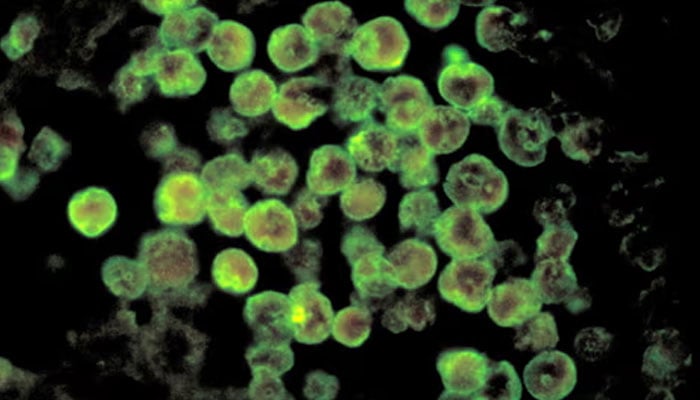
Newswise — As South Africa commemorates National Water Week from 20 to 26 March, a range of recent projects at the University of Pretoria’s (UP) Hatfield Campus is reaffirming UP’s commitment to optimal stormwater management, rainwater harvesting and reducing its environmental footprint.
One particularly notable example of this commitment is the University’s newly implemented parking lot rainwater collection system, which enables the collection of rainwater off a new lightweight roof that provides shade to cars parking in selected campus bays. The water collected will eventually help irrigate the Manie van der Schijff Botanical Gardens (MVDSBD), which covers about 3,5 hectares of the campus.
The parking lot project, as with many other such projects, was designed around the idea of Sustainable Drainage Systems (SuDS), which allow for a more sustainable approach to stormwater management.
“The opportunity to use the parking lot for rainwater harvesting came up when its roof needed replacement,” says Jason Sampson, curator of the Manie van der Schijff Botanical Gardens. “Its proximity 300 metres to the east of UP’s award-winning Rainwater Harvesting Garden made the project especially enticing and practically feasible.”
The parking lot project will be fully operational once the system, consisting of lightweight roofing systems and permeable paving feeding into an underground catchment (with an integrated rainwater infiltration zone), is connected via piping to the nearby Rainwater Harvesting Garden and its series of ponds running alongside the Faculty of Engineering, Built Environment and IT’s (EBIT) Engineering 1 Building. Excess water will flow into an existing 130 000-litre underground storage tank that was constructed along with the Rainwater Harvesting Garden in the early 2010s.
“This tank is the centre of the Manie van der Schijff Botanical Gardens’ fully automated irrigation system,” explains Sampson, who has over the past decade ensured that many indigenous plants from the botanical garden’s collection now flourish outside its borders. He has also planted various edible plants across UP’s eight campuses.
Sampson conceptualised the Rainwater Harvesting Garden in the early 2010s along with Neal Dunston, the then resident landscape architect in UP’s Department of Facilities Management.
The garden showcases aquatic ferns and other notable plants such as papyrus and sacred lotus, which do more than beautify a space that was once covered by roads and hard surfaces. The man-made wetland provides an innovative, useful and more cost-effective way to manage, retain, filter and recycle the deluge of stormwater that runs off rooftops, parking lots and other hard surfaces such as pavements around it during the region’s high-rainfall summer storms.
Sampson explains that 17 000 litres of water can be harvested for every 10 mm of rain that falls on the 1700 m² Study Centre roof alone. The water is continuously circulated through plant-filled swales and ponds to be bio-filtered and cleaned.
When it was conceptualised in 2013, the hope was that the garden would merge landscape and building, serving as a “living laboratory” to inspire similar concepts across the University.
By all accounts, it has been a success. Sampson notes that the garden is regularly used for teaching purposes and is a valuable source of plant material for many research projects. Studies on medicinal water plants have resulted in many spin-off advantages, such as the publication of one book. The microbial life in the wetland soil is also being studied.
The garden has also inspired similarly beautiful rain harvesting ponds at UP’s Future Africa campus and Engineering 4.0 Building, with water also being used for irrigation.
“Rainwater harvesting and incorporating indigenous and/or edible ‘Giving Gardens’ offer a holistic approach to sustainable water management,” says Ilze Ueckermann, sustainability specialist at the Department of Facilities Management. “These strategies conserve water and enhance biodiversity, food security and climate resilience. They allow the University to use water sustainably, while ensuring that stormwater that would have in the past just run away is retained longer, ensuring infiltration into the soil and less damage to infrastructure.”
Handling stormwater
Marié Badenhorst, landscape architect in UP’s Department of Facilities Management, says the institution must comply with very specific stormwater management system requirements for public spaces, as set out by the City of Tshwane’s Roads and Stormwater Department.
She explains that the implementation of various localised attenuation facilities to help stormwater better infiltrate into the soil has proven to be a cost-effective way of lightening the load of urban drainage systems during downpours. “There are also the added advantages of water being filtered and groundwater being replenished,” she adds.
Over the past year projects facilitated by the Department of Facilities Management at two women’s residences have been very successful.
One has seen the courtyard of House Madelief transformed into a stormwater drainage catch pit which sees surface run-off directed towards a central gravel seating area. This allows water to infiltrate the soil while minimising surface run-off.
Regular flooding of House Erica due to insufficient stormwater inlets has been addressed by installing a series of custom-designed drainage pits. These allow water to slowly seep into the ground, creating a pop-up pond whenever it rains.
“Small interventions like these reduce the risk of flooding and damage to UP facilities, and they form an integral part of our stormwater management plan, which is part of the UP 2030 Spatial Development Plan,” Badenhorst adds.
The team says these efforts reflect UP’s ongoing commitment to sustainable urban water management, ensuring that infrastructure developments work in harmony with the environment.




